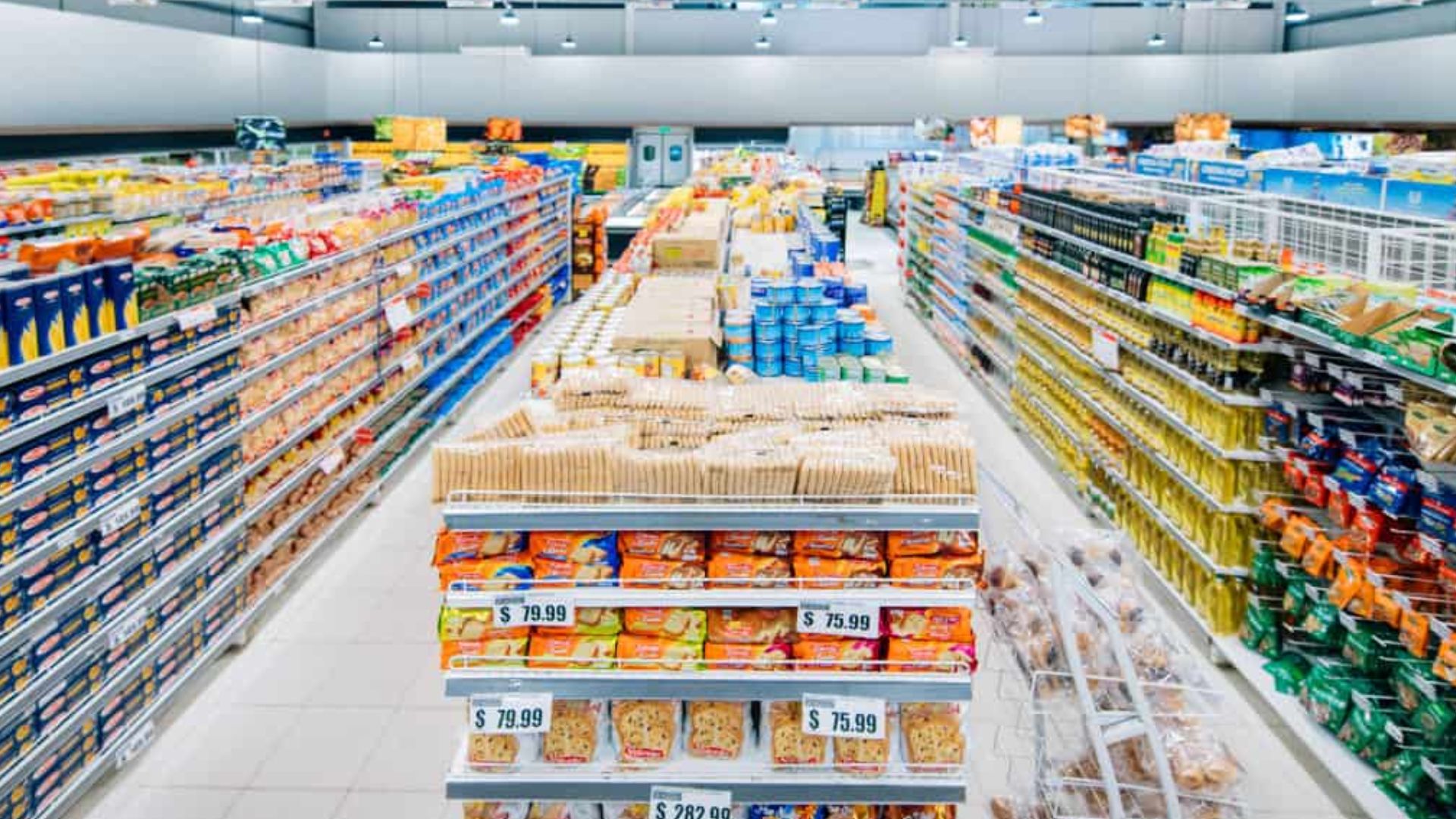"What gets measured gets managed," and in the retail industry. Shelf share is the metric that provides the insight needed to manage product visibility and influence consumer purchasing decisions. By understanding the portion of shelf space your brand occupies compared to the total category, you can strategically enhance product placement, increase brand recognition, and ultimately drive sales. Shelf share isn't just a number—it also directly impacts brand share and the key to unlocking a competitive edge in the crowded retail landscape.
In this article, we will explore the methods for calculating shelf share, its importance in the retail landscape, and how advanced technologies like image recognition are revolutionizing how it is measured and applied.
Methods to Calculate Shelf Share
Calculating the share of shelf, or simply abbreviated as SOS, accurately is essential for understanding your brand's presence in the marketplace. There are several methods available, each varying in complexity and precision. From simple facings counts to advanced image recognition technology, these methods provide retailers with the necessary tools to effectively measure and manage their shelf space.
The calculation involves several methods, each with its own level of accuracy and efficiency:
1. Facings Count: This method calculates the ratio of a brand's product facings to the total number of facings in a category. It’s a straightforward approach where each face represents one unit of the product visible on the shelf. This method is most effective when products are uniformly packaged, making it easier to tally and compare.
2. Linear Shelf Space Measurement: When product packaging varies in size, linear shelf space measurement becomes crucial. This method measures the shelf space in centimeters a brand occupies versus the total category space. It provides a more precise calculation by accounting for the actual space each product occupies on the shelf.
Understanding the method of measurement is essential, but why is it so crucial to your brand's success?
Importance of Shelf Share
The share shelf plays a pivotal role in retail, with far-reaching impacts on brand visibility, consumer behavior, and competitive positioning:
- Enhances Brand Recognition and Visibility: The more shelf space your product occupies, the more visible it is to consumers. A high share of shelf can significantly enhance brand recognition, making it more likely that customers will choose your product over competitors.
- Influences Consumer Purchasing Decisions: Products that are prominently displayed and take up more shelf space are more likely to be purchased. Consumers often equate the amount of shelf space with the popularity and reliability of the product.
- Provides a Competitive Edge: By securing more space on the shelf, a brand can edge out competitors by ensuring its products are more accessible and visible. This can lead to increased sales and market share.
With a clear understanding of how to calculate the share of shelf, the next step is to explore the methods used to track this crucial metric effectively.
Tracking Methods
Accurately tracking shelf share is vital for safeguarding and improving your market share. . By using reliable tracking methods, brands and retailers can ensure that their products are positioned optimally to maximize visibility and sales. Different methods vary in accuracy and efficiency, from simple visual estimates to advanced AI-driven solutions, allowing retailers to choose the best approach based on their needs. Here are some common methods:

Also read: How Photo Recognition Helps in Retail Shelf Monitoring
As technology continues to advance, how shelves are shared, measured and tracked has become increasingly sophisticated, providing retailers with more precise and actionable insights.
Technological Advancements in Shelf Share Measurement
The evolution of technology has dramatically enhanced the accuracy and efficiency of measuring the share of shelf. Where traditional methods relied on manual auditing processes, modern advancements like AI and IoT now enable real-time, precise data collection. These innovations allow brands and retailers to gain accurate and deeper insights into their shelf presence, ensuring they can quickly adapt to market demands and optimize product placement effectively. Let's delve into some of the cutting-edge technologies that are transforming how retailers measure and manage their shelves.
1. Image Recognition
Image recognition technology, powered by artificial intelligence (AI), enables brands and retailers to analyze vast amounts of visual data quickly and accurately. By capturing images of store shelves and using AI algorithms to process the images , one can determine exactly how much shelf space their products occupy relative to competitors. This technology not only provides real-time insights but also allows for automated and consistent monitoring across multiple store locations. ParallelDots’ ShelfWatch is an example of such a solution, offering precise measurements that help retailers make informed, data-driven decisions about product placement and inventory management.
Also read: ShelfWatch – A Smart Image Recognition based Retail Execution Software
2. Integration with IoT and AI
The integration of the Internet of Things (IoT) with AI has revolutionized shelf share measurement by enabling continuous, real-time monitoring of shelf conditions. IoT devices, such as smart sensors, can track various metrics like product movement, shelf temperature, and humidity, while AI processes this data to provide actionable insights. This combination ensures that retailers receive up-to-date information about their share of shelf, allowing them to respond swiftly to changes in the retail environment. It also helps maintain optimal stock levels, preventing issues like out-of-stock or overstocking.
These technological advancements are not just about tracking shelf share—they are about transforming data into actionable insights that drive strategic decisions and improve overall retail performance. With accurate data at your disposal, let's find out how can you apply these insights to boost your brand's performance.
Applying Shelf Share Insights
Understanding your shelf share is just the first step—applying these insights effectively can lead to significant improvements in sales and overall business performance. This is how:
- Optimizing Revenue: By ensuring optimal shelf space, brands and retailers can enhance product accessibility, driving higher sales and improving revenue.
- Identifying Growth Opportunities: Shelf share data can highlight under-spaced or over-spaced products, allowing for adjustments that maximize sales potential.
- Competitive Strategy: Data-driven insights enable retailers to make strategic decisions about product placement, giving them a competitive edge in the market.
By analyzing shelf share data, brands and retailers can optimize product placement, identify growth opportunities, and refine their competitive strategies. These insights help ensure that high-performing products receive the visibility they deserve while also informing decisions on how to adjust shelf space allocation for maximum impact. To gain even deeper insights, it’s essential to combine shelf share data with sales performance metrics as given below.
Combining Shelf Share with Sales Data
Integrating shelf share data with sales performance metrics provides a strategic advantage by enabling brands and retailers to assess whether their products are receiving the visibility they deserve based on their sales outcomes. This combined analysis allows retailers to identify underperforming products that may benefit from better shelf placement or enhanced promotional efforts. By correlating shelf space with sales figures,brands and retailers can make informed decisions to optimize their product displays, ensuring that high-performing items maintain their visibility while addressing potential gaps in sales performance. This structured approach not only maximizes revenue but also enhances overall store efficiency and product management. Therefore, understanding and measuring shelf share is not just about occupying space—it’s about making that space work for your brand's success.
Also read: Building the Perfect Retail Execution Strategy – with Image Recognition
Conclusion
In conclusion, understanding and measuring shelf share is a vital component of retail success. It goes beyond merely occupying space on a shelf; it’s about strategically placing products to maximize visibility, drive sales, and outmaneuver competitors. By utilizing advanced technologies like image recognition, IoT integration, and RFID tags, retailers can gain precise, actionable insights that inform product placement and inventory management. When combined with sales data, these insights become even more powerful, enabling brands and retailers to make informed decisions that enhance both revenue and overall store efficiency.
To see how advanced solutions like ParallelDots’ ShelfWatch can help optimize your shelf share and elevate your retail strategy, book a demo today!


